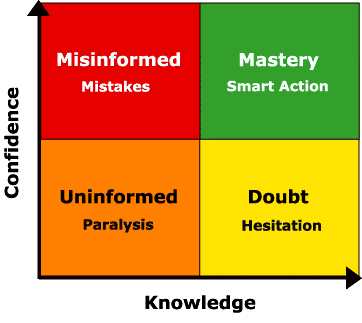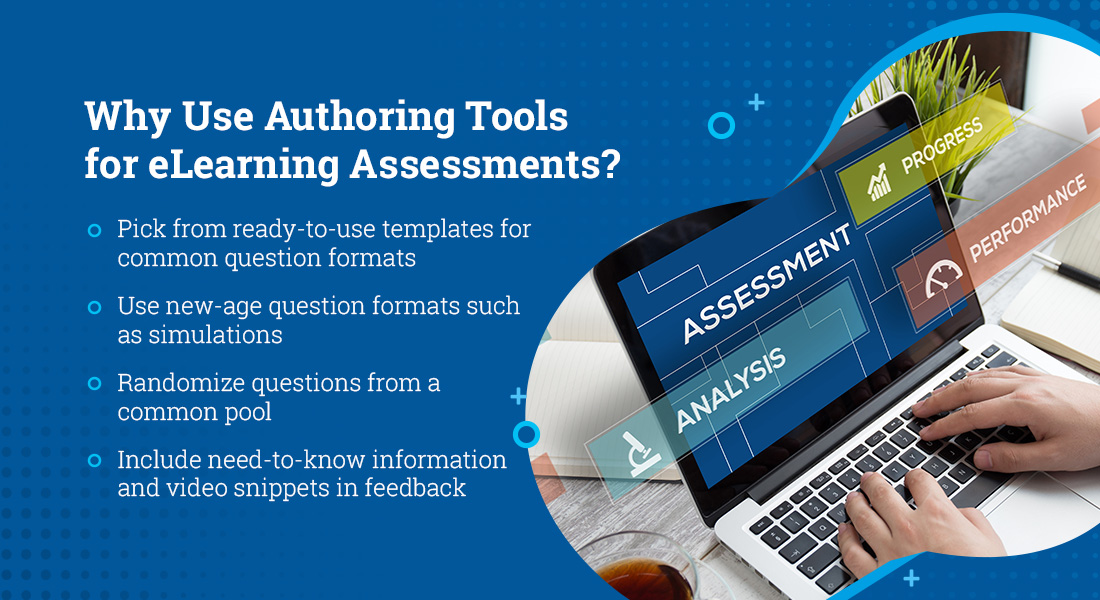3 Reasons to Use Confidence-based Assessments in eLearning

Assessments are an integral part of eLearning courses. However, do you know how effective those assessments are? For all you know, your learners could score by clever guesses without actually knowing the right answers. I’m sure you’re already aware of how this can skew the results of your eLearning assessment. This is where confidence-based assessments can step in and make a big difference.
Why use confidence-based assessments in eLearning?
When you want learners to avoid guesswork and be really confident about their answers, give confidence-based assessments a try.
Here’s how they can help:
- To identify areas of improvement in learners
- To stimulate understanding and improve confidence levels
- To encourage reflective learning
What is a Confidence-based Assessment in eLearning?
Here’s an example to help you understand the concept of confidence-based assessments.
Assume the new hires in your sales team go through an eLearning course on the company’s products that are soon to be launched in the market. At the end of the course, they are presented with a traditional summative assessment that consists of multiple choice questions (MCQs).
Now, some of your new hires might be really sure about their answers because they have gained the knowledge and are ready to apply what they have learned at the workplace. A few others may not be too sure and they might use guesswork to get the answers right. Learners might secure similar scores but that doesn’t mean all of them are capable of applying the knowledge on the job.
How then do you differentiate between these learners and ascertain they are really ready to apply the learning at the workplace? Confidence-based assessments can take care of that by eliminating guesswork and integrating MCQs with the learners’ self-perceived level of confidence.
Reasons to Use Confidence-based Assessments
Here are three reasons to consider using confidence-based assessments in your eLearning course.
1. Identify Areas of Improvement in Learners
Most of the research on confidence-based learning was pioneered by Dr. James Bruno, a Professor of Education at UCLA. His research led to the creation of a 2-dimensional matrix known as the Learning Behavior Model where each question assesses learners on correctness as well as confidence.

Source: https://en.wikipedia.org/
Here’s how learners are categorized in each quadrant of the matrix:
- Uninformed — Learners falling under this category know that they don’t have the knowledge and hence lack confidence.
- Doubt — Learners in this category have the knowledge but are not confident enough about applying the knowledge. They are more likely to hesitate to perform tasks at the workplace.
- Misinformed — Learners in this category lack knowledge but have high levels of confidence. This could set them up for failure at tasks in the workplace.
- Mastery — Learners in this category have the knowledge as well as the confidence to apply that knowledge. This naturally makes them more productive at the workplace.
By using confidence-based assessments, it is easier to categorize learners and identify areas of improvement.
- For instance, when learners think they know but they actually don’t know, it means they are misinformed and stand a higher chance of making mistakes at tasks assigned in the workplace. Such learners could do with additional coaching and mentoring.
- With learners who know but lack confidence, spaced repetition can help. Giving such learners opportunities for repeated practice can help boost their confidence levels.
2. Stimulate Understanding and Improve Confidence Levels
Incorporating confidence-based assessments brings down the chance of scoring well using guesswork. Learners have to be really sure about their knowledge and then make their choices. This obviously means learners would have to understand the content in the eLearning course thoroughly before they attempt the confidence-based assessment.
| An Example on Confidence-based Assessment
One of our clients from the pharma industry used confidence-based assessments to test staff involved in the clinical trials of products. After each question, learners were not only required to select the right answer but also choose if they were sure about their answer. The scoring system was designed in the following way:
Using a confidence-based assessment helped our client identify employees who lacked confidence or were over confident but lacked knowledge and rollout appropriate remedial measures. |
Confidence-based assessments can also make use of a confidence meter that tracks and displays a scale that moves to reflect a positive or negative score depending on learners’ responses as they progress through the assessment. We designed a confidence meter that made use of ‘states’ in Storyline, which can be triggered based on a learner’s interaction with the content. In this case, a learner’s response was captured to trigger a positive, neutral, or negative state and the scale on the confidence meter moved accordingly.
3. Encourage Reflective Learning
Using confidence-based assessments in formative assessments is a way to encourage reflective learning. Here are a few reflective questions learners can ask themselves.
- Where am I on my learning?
- How can I improve my learning?
Here’s how confidence-based assessments encourage reflective learning:
- Learners are encouraged to think and choose their response. This boosts higher-order thinking skills.
- Learners are able to assess their learning as their answers are either based on sound knowledge or a guess.
- They enhance deeper levels of learning as opposed to rote learning.
Tying it All Up
Confidence-based assessments can help you arrive at an accurate and realistic judgement of learners’ performance. It benefits your employees too, as they realize that sound knowledge cannot be based on guesswork. Along with it comes self-realization on the importance of confidence, and this can help them get started on ways to improve confidence levels.
Theodore Roosevelt was so right when he said “”Believe you can and you’re halfway there.”
Confidence-based assessments provide your employees with a chance to test their knowledge and confidence and work toward improving both. Have you tried confidence-based assessments in any of your eLearning courses? If yes, please use the Comments section to let us know how it helped your employees. And, if you’re interested in knowing more about using the right brain to design creative eLearning, don’t forget to download our eBook on eLearning Design and the ‘Right’ Brain.



![Why Use Confidence-based Assessments in eLearning [Infographic]](https://blog.commlabindia.com/hubfs/Imported_Blog_Media/confidence-based-assessments-elearning-infographic-1.jpg)

